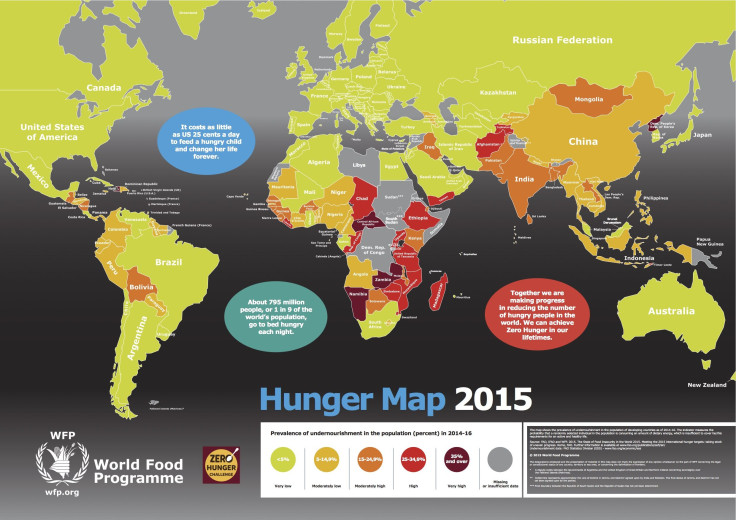The Real Hunger Games: Hunger Map shows where the 795 million who didn’t have enough to eat in 2015 live

In 2015, 795 million people across the world did not get enough food to lead a normal, active life.
This translates to one in nine of the world’s population going to bed hungry every night, despite it costing as little as approximately 30 cents to feed a hungry child.
While Australia, Europe, Russia, Canada and the US had less than five percent of their population being under-nourished in 2015, countries like Mongolia, India, Iraq and Kenya reached the 15-24.9 percent mark.
The story gets worse for certain countries in Africa, as well as Afghanistan and North Korea.
Click on the map below to zoom in:

According to the World Food Programme (WFP), daily under-nourishment is a “less visible form of hunger” than what we are shown on screens, such as food packs being airlifted to earthquake victims, and refugees from war-torn countries queuing for food rations. Emergencies actually account for less than eight percent of hunger victims.
Children are the most common victims of this invisible epidemic, with many dying from common infections like measles and diarrhoea because they are deprived of the right nutrition. In fact, up to 2.3 million children die every year before they reach five due to malnutrition.
While the numbers are astounding, there is no food shortage in the world today.






















